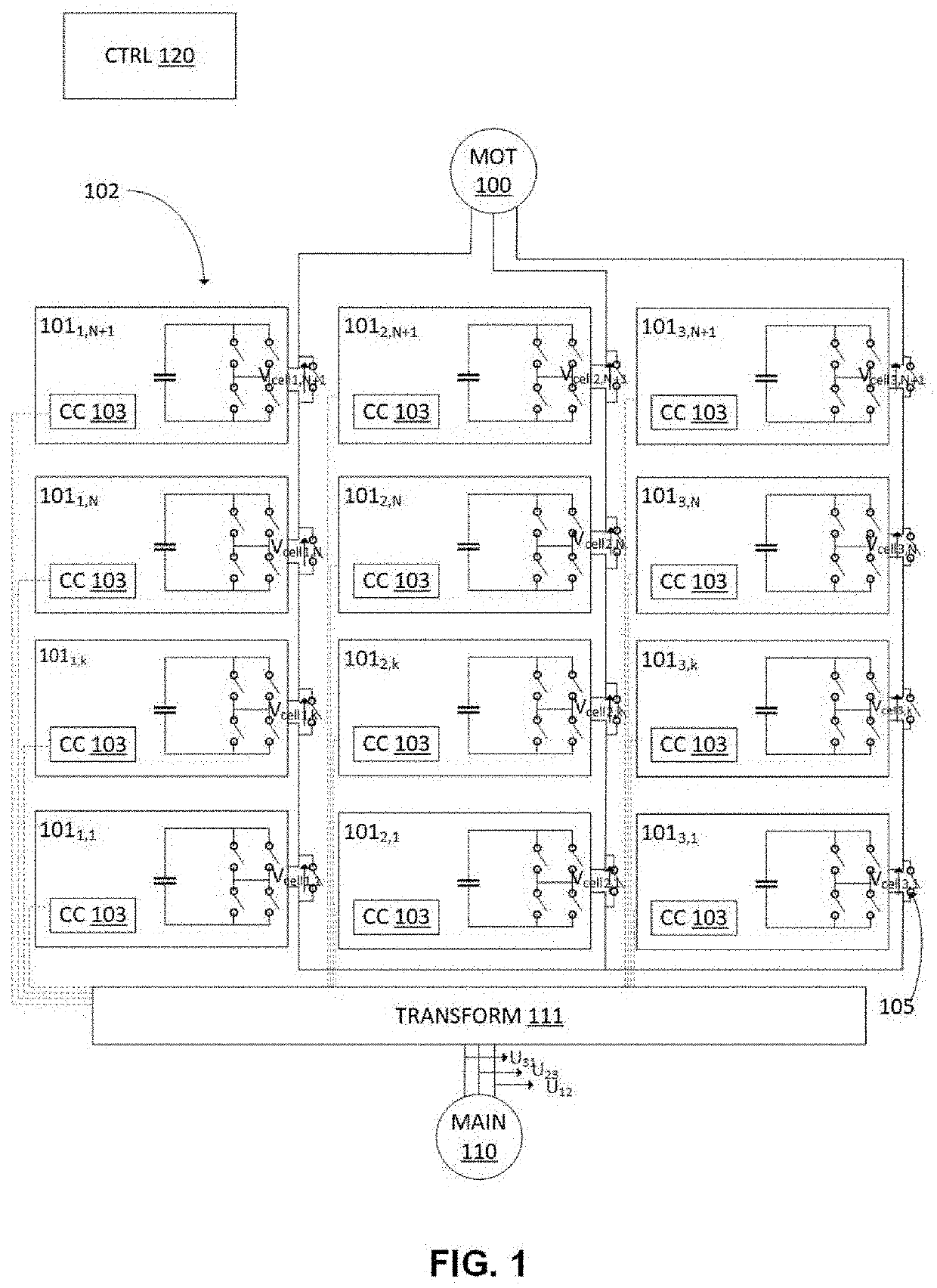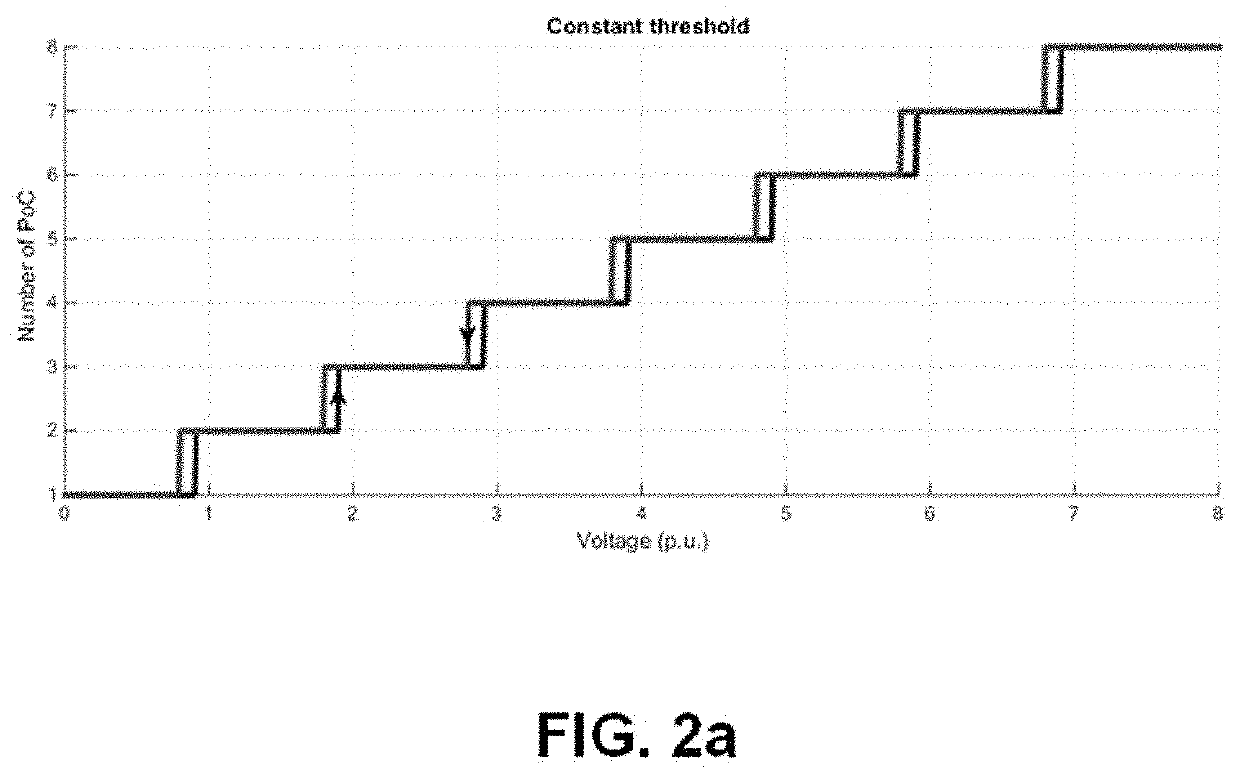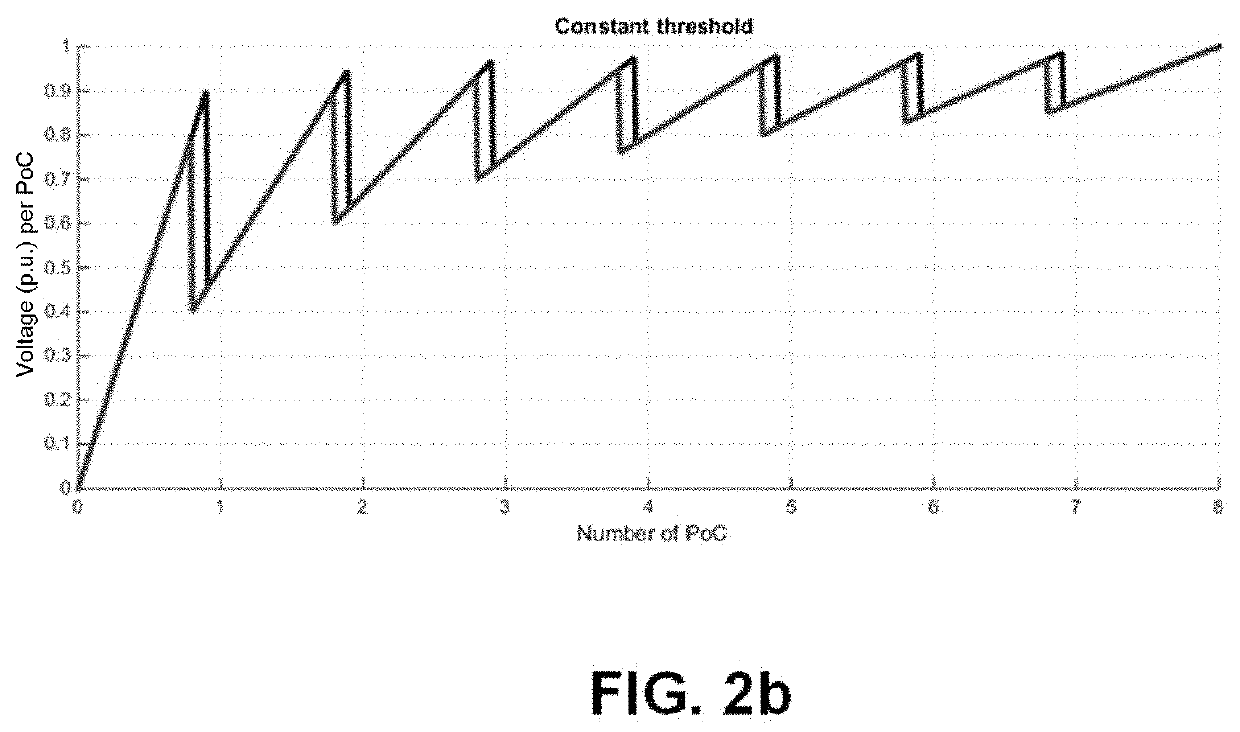Management of the number of active power cells of a variable speed drive
- Summary
- Abstract
- Description
- Claims
- Application Information
AI Technical Summary
Benefits of technology
Problems solved by technology
Method used
Image
Examples
first embodiment
[0093]According to the invention, illustrated with reference to FIG. 4, the change of the number of active power cells is synchronized between the processor 300 and the FPGA 301. FIG. 4 illustrates the control signals when changing from a configuration in which three power cells 101 are active to a configuration in which two power cells 101 are active, for a given phase, at the time 404. Such configurations of course depend on the situation and are given only by way of illustration. FIG. 4 corresponds to control signals for a single phase out of the three phases supplying power to the motor 100 in FIG. 1.
[0094]In the previous configuration with three active power cells 101, the triangular-wave signals 401, 402 and 403 are generated by the FPGA 301 for three power cells 101 of the first phase.
[0095]These triangular-wave signals are associated with respective reference control voltages Vref1,1, Vref1,2 and Vref1,3 in order to compare and generate PWM control orders to be sent to the p...
second embodiment
[0103] only the FPGA 301 adapts its operation so as to reduce the number of active power cells 101, without this impacting the operation of the processor 300.
[0104]The FPGA 301, in a preceding phase, thus supplies the triangular-wave signals 501 to 503 associated respectively with respective reference control voltages Vref1,1, Vref1,2 and Vref1,3.
[0105]At the time 504, a modification of the number of active power cells 101 from three to two is determined, for example by virtue of receiving a new speed command and / or calculating a new reference motor voltage.
[0106]The period TDSP of the processor 300 is not modified and the triangular-wave signals thus remain offset by 2π / 3.
[0107]The FPGA 301 recalculates the values Vref1,1 and Vref1,2 so as to produce the target output voltage of the variable speed drive, and sets the value Vref1,3 to zero. The duty cycle applied by the power cell 1011,3 is therefore equal to 0, and the voltage at the output of this power cell 1011,3 is zero. The po...
PUM
 Login to View More
Login to View More Abstract
Description
Claims
Application Information
 Login to View More
Login to View More - R&D
- Intellectual Property
- Life Sciences
- Materials
- Tech Scout
- Unparalleled Data Quality
- Higher Quality Content
- 60% Fewer Hallucinations
Browse by: Latest US Patents, China's latest patents, Technical Efficacy Thesaurus, Application Domain, Technology Topic, Popular Technical Reports.
© 2025 PatSnap. All rights reserved.Legal|Privacy policy|Modern Slavery Act Transparency Statement|Sitemap|About US| Contact US: help@patsnap.com



